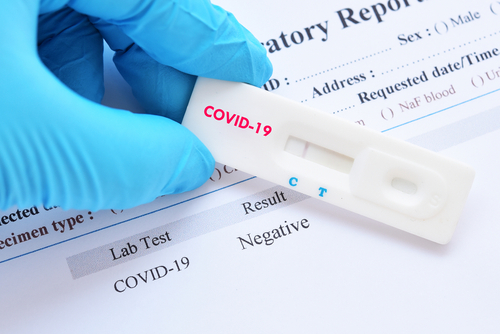You are here
Researchers tout COVID-19 testing efficacy innovation
Wed, 2020-10-07 15:18 — mike kraft Researchers tout COVID-19 testing efficacy innovation - Homeland Preparedness News National Institute of Standards and Technology (NIST) researchers maintain they have developed a means of increasing primary SARS-CoV-2 virus testing sensitivity to help identify those who are asymptomatic. Findings published in Analytical and Bioanalytical Chemistry outlined a mathematical technique for … Read More » Homeland Preparedness News
Researchers tout COVID-19 testing efficacy innovation - Homeland Preparedness News National Institute of Standards and Technology (NIST) researchers maintain they have developed a means of increasing primary SARS-CoV-2 virus testing sensitivity to help identify those who are asymptomatic. Findings published in Analytical and Bioanalytical Chemistry outlined a mathematical technique for … Read More » Homeland Preparedness News National Institute of Standards and Technology (NIST) researchers maintain they have developed a means of increasing primary SARS-CoV-2 virus testing sensitivity to help identify those who are asymptomatic.
Findings published in Analytical and Bioanalytical Chemistry outlined a mathematical technique for perceiving faint signals in diagnostic test data indicating the presence of the virus. The signals can escape detection when the number of viral particles found in a patient’s nasal swab test sample is low. The team’s method helps a modest signal stand out more clearly.
“Applying our technique could make the swab test up to 10 times more sensitive,” Paul Patrone, a NIST physicist and a co-author on the team’s paper, said. “It could potentially spot more people who are carrying the virus but whose viral count is too low for the current test to give a positive result.”
Researchers learned the shape of a positive test graph — a flat, noisy beginning followed by a spike — is found even in data that currently does not trigger a positive test result.
The research paper offers a formal proof that the shapes are mathematically similar to triangles with the same angles and proportions despite being larger or smaller than one another. The theoretical evidence is applied in a routine a computer can use to recognize the data’s reference shape....

Recent Comments